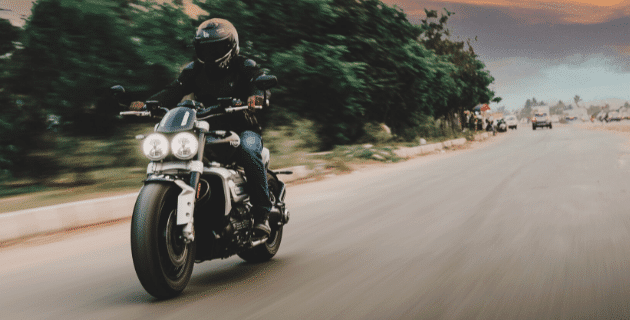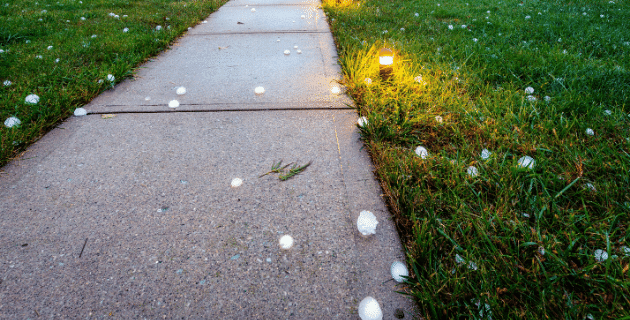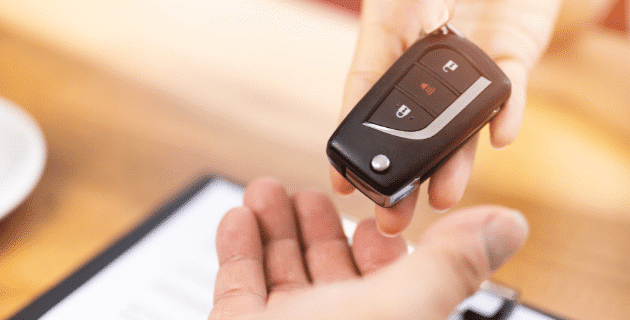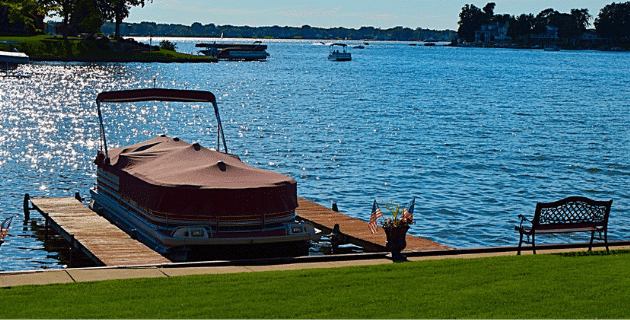by California Casualty | Auto Insurance Info, News |
We have amazing employees at California Casualty. The New Employee Spotlight is a series aiming to highlight the talented individuals that are brand new to our team. Please help us give them a warm welcome!
Today we’re spotlighting New Claims Adjuster. Rich Gilliam
Let’s get to know, Rich!
Where are you from?
I work in the Arizona office, but I’m originally from Farmington, NM.
What is one interesting fact you want us to know about you?
I am a two-time brain cancer survivor.
If you could eat one food for the rest of your life, what would it be?
Steak
What do you like to do on the weekends?
Theatre
Singing
Spending time with my sons
What made you want to start your new career with California Casualty?
I enjoy being a claims adjuster and love the company culture at California Casualty!
If you want to learn more about Rich or are interested in a career at California Casualty, connect with him on LinkedIn! Or visit our careers page at https://www.calcas.com/careers

by California Casualty | Auto Insurance Info |
When you take your motorcycle out on a beautiful day, you can enjoy it all — the open road, the sunshine, the fresh air, and the calmness of the ride. But when you take your bike out on a windy day, it’s a much different experience.
Not only can the wind be cold and uncomfortable for riding, but it can also make it more challenging to maintain control. In fact, riding your motorcycle in the wind can be such a nerve-wracking journey that it might make you decide to skip the trip entirely. However, there will be times when you get caught on a windy day or when your bike is your only option. Follow these tips to stay safe when riding your motorcycle in the wind.
Tip #1: Prepare in advance for a windy ride.
-
- Minimize the amount of baggage that you carry. Saddlebags, backpacks, and even your clothing can catch the wind, creating unnecessary drag.
- Secure loose items that could be easily blown away.
- Wear protective eyewear to shield your eyes from any windblown dirt or debris.
Tip #2: Check the weather.
-
- Wind speeds exceeding 50 mph are considered too dangerous for motorcycles, even heavier models.
- Wind speeds between 20 and 30 mph will be too much for most lightweight motorcycles.
- Avoid taking your motorcycle out during high wind warnings, hurricane-force winds, tornados, or other severe weather conditions.
Tip #3: Stay calm and in control.
-
- Don’t panic. Relax and try not to grip the handles too hard. Maintain a steady speed.
- Ride in the middle of the lane. Give yourself some space in case you move to the right or left due to wind gusts. Know that the other vehicles on the road could be moved by the wind, too.
- Know your abilities. If you’re inexperienced, or if you feel out of control, find a safe place to wait it out. Better safe than sorry.
Tip #4: Know the direction of the wind and how to adjust.
-
- You may be able to feel the direction of the wind. But if you’re unsure, look for things that are blowing: grass, the tops of trees, and flags. Note the direction the wind is blowing.
- If it’s a tailwind, it will push you from behind.
- Give yourself extra stopping distance. The wind could propel you forward as you’re trying to slow and stop.
- Watch your speed and stay in your comfort zone. You don’t want the wind to push you faster than you are comfortable traveling.
- If it’s a crosswind, it comes from the sides.
- This is the most difficult type of wind. It can come to you from either side, or both.
- Shift your weight to the side the crosswind is coming from and lean into it slightly. Do it carefully so you don’t affect your balance.
- Using your leg on the side the wind is coming from, turn your knee in the direction the wind is blowing. Your leg acts as a sail and the wind won’t push you as hard.
- If it’s a headwind, it’s coming to you from the front.
- Headwinds are stronger than the wind that usually comes at you from the front.
- Ride low behind the windshield.
- Keep your legs and arms close to your body and to the bike.
Tip #5: Be aware of wind fluctuations.
-
- The wind direction can change at any time. Be prepared to adjust accordingly.
- If you’re behind a large truck, it will block the wind from you somewhat. Be prepared for a wind gust as you move away from the truck.
- Remember the rules about sharing the road with others. Add extra distance when it’s windy in case you need it.
Tip #6: Certain places are windier than others.
-
- Winds are generally higher in the hills and lower in the valleys.
- Roads with hedges and other barriers can help to protect you from the wind.
- If the open road is too windy, see if there is another route you can take that is more sheltered.
Windy conditions can contribute to accidents. Make sure your bike is fully protected with the right amount of motorcycle insurance. Safe travels—and enjoy the ride.
This article is furnished by California Casualty, providing auto and home insurance to educators, law enforcement officers, firefighters, and nurses. Get a quote at 1.866.704.8614 or www.calcas.com.
by California Casualty | Auto Insurance Info |
We have amazing employees at California Casualty. The New Employee Spotlight is a series aiming to highlight the talented individuals that are brand new to our team. Please help us give them a warm welcome!
Today we’re spotlighting New Inbound Sales Representative. Carrie Fierro
Let’s get to know, Carrie!

Where are you from?
Originally from San Angelo, Texas
What is one interesting fact you want us to know about you?
I have a super friendly, talkative, upbeat personality. Since the time I could talk my mom said I would just walk up to anyone and introduce myself. I guess I was kind of born to be in sales. haha!
If you could eat one food for the rest of your life, what would it be?
Chicken enchiladas
What do you like to do on the weekends?
Hiking
Spending time with my children
Reading romance novels
What made you want to start your new career with California Casualty?
Their awesome benefits and pay scale were above the average for the Colorado Springs area and they gave me a shot even though I was coming all the way from Texas!!
If you want to learn more about Carrie or are interested in a career at California Casualty, connect with her on LinkedIn! Or visit our careers page at https://www.calcas.com/careers

by California Casualty | Auto Insurance Info, Homeowners Insurance Info |
Hail is responsible for billions of dollars of damage each year, according to the Insurance Information Institute. It only takes one bad hailstorm to damage your roof or siding, dent your vehicle or crack your windshield. Knowing what to expect, along with having the right auto and home insurance, will help you to protect your biggest investments.
What causes hail?
Hail commonly occurs during severe thunderstorms. It’s formed when storm winds carry rain up into the extremely cold parts of the atmosphere. The rain freezes, comes in contact with more rain that freezes to it, and ultimately becomes a chunk of ice. Eventually, the hailstones grow heavy and fall to the ground.
Hail can be as small as the size of a pea or as large as a softball. Most hail, however, is golf ball-sized or smaller. Windspeeds can cause hail to hit at a rate between 44-72 mph. Hail mixed with high winds has been known to cause severe damage.
What damage can hail do to your home?
ROOFS: Roof damage from hail is common. Large pieces of hail can make dents in shingles and destroy the roof’s finishes. Different types of shingles show damage in different ways. For asphalt and composition shingles, look for dings that are black in color or soft to the touch. They may resemble a bruise on an apple. Also, look for loss of granules on asphalt; the shingles may appear shiny. For wood shingles, look for splits that are brown or orange and have sharp edges. Damaged shingles can cause your roof to leak or create water damage to the structure below. Getting these fixed is important to keeping the integrity of your roof.
Pro-Tip: Are you renovating your home? Consider impact-resistant shingles that can withstand hail. Not only will they help to reduce damage, but they may also help you qualify for a discount on your property insurance.
SIDING: Hail can cause dents in aluminum siding and cracks in vinyl or wood siding. Water can seep in and cause problems. Look for warping or buckling, chipping, cracks, dents and holes. It’s best to do this when the sun isn’t too bright, as it could cast shadows and prevent you from seeing the damage. Again, get any damaged siding fixed as soon as you are able.
GLASS: During a hailstorm, stay away from skylights, windows, and glass doors, which are at risk for breakage from hail. Close your drapes, blinds, or shades in case a broken window occurs. This can help keep some of the glass from being blown around your house. Also, you may choose to install shutters which can help to protect your glass. You have a responsibility to make reasonable and necessary repairs to protect your property from further damage, as per your insurance contract. Your insurance company might reimburse you for these costs.
PATIO FURNITURE: Protect your patio furniture by covering it, or moving it inside a garage. Prune your trees ahead of time to remove weak or dead branches that can cause additional problems.
What damage can hail do to your car?
WINDSHIELD AND WINDOWS: Similar to the glass in your home, your car’s windshield, windows, and sunroof can be cracked or even shattered by hail. Cover your vehicle with a car cover. You can buy one or make your own with blankets. Secure the blankets with duct tape; while it may leave a sticky residue, it will not damage your paint.
CAR BODY: Hail can dent your car’s body as well the glass and a car cover can help. If a hailstorm is coming, park your car under an awning or in a garage. You can move your car to a local mall with a parking garage if you don’t have one. If you are driving during a hailstorm, pull over. Angle your car so that hail hits your reinforced windshield rather than the side and back windows.
What kind of insurance do you need?
You can’t control the weather, but you can purchase the insurance that keeps your home and your vehicle protected in case they are damaged by a hailstorm. These policies will give you the money you need to repair or replace covered items, subject to your policy deductible.
HOME PROTECTION
In most states, hail is one of the covered perils in a homeowner’s policy. Your dwelling coverage pays for repairs to your roof or siding while detached structures fall under “other structures coverage.” If hail gets inside and damages belongings, that can be covered under homeowner’s insurance. For personal property to be covered, the direct force of the wind or hail must damage the building, causing an opening in a roof or wall. You unfortunately won’t get any coverage if you leave the window or door open.
-
- If you live in a state that is prone to hailstorms, you may not be covered. You may have to purchase an endorsement to your policy or even a separate windstorm and hail policy to be covered for hailstorms.
- Your policy may have an exclusion for cosmetic damage to the roof and/or siding. If the damage done by hail is cosmetic, your policy will not pay. Cosmetic damage is considered damage that does not prevent the roof surface or siding coverings from functioning as a barrier to weather elements over an extended period of time.
- Depending upon the age of your roof (typically 10 years of age or more), actual cash value loss settlement could apply, meaning that you’ll receive an amount based on depreciation.
- If the damage isn’t higher than your deductible, you probably don’t need to file a claim. You can pay out of pocket, as insurance only kicks in after the deductible is met.
AUTO PROTECTION
Not all auto insurance policies cover hail damage. You have to have the right type of coverage.
-
- Other Than Collision Coverage or OTC is for natural disasters, fires, vandalism, theft, and animals that damage your vehicle. Think of it as “bad luck coverage.” This coverage is not usually required unless you’re leasing a vehicle or paying a car loan. However, it’s valuable to protect your car from hailstorm damage.
- If your car needs to stay in the shop, you will want an insurance policy with Transportation Expenses coverage, also known as rental reimbursement. If you carry coverage for damage to your auto, your California Casualty policy automatically includes coverage for a rental car up to $20 a day. For an additional fee, you can increase that amount.
- If hailstorms damage your car to the extent that it is totaled, your insurance policy will likely pay you for the actual cash value of your car.
Talk to your insurance agent to see what is covered under your policy before the next hailstorm strikes. That way you’ll be fully prepared.
This article is furnished by California Casualty, providing auto and home insurance to educators, law enforcement officers, firefighters, and nurses. Get a quote at 1.866.704.8614 or www.calcas.com.

by California Casualty | Auto Insurance Info, Calcas Connection |
Anyone who has ever dropped off at soccer practice, then zoomed to dance, and back again to school, knows the reality of parenting today. We live in our cars. In fact, we can’t live without them, which is why it’s more than just an inconvenience when our cars are in the shop.
Enter the rental car, the savior helping us to navigate our hectic lives, pun intended. Rentals can be a necessity when our car is in the shop for repairs after an accident, and it would be nice if we didn’t have to pay too much for them. That’s where rental car reimbursement coverage (also called transportation expense coverage) can help. A basic amount of this coverage is included with collision/comprehensive coverage in your auto policy. It helps cover the cost of a rental car after a car accident, but the basic coverage may not be enough these days. Optional higher coverage levels are available and can help to cover more of the cost of a rental car.
Things are changing—which could impact your budget.
Today’s world is not the same as pre-pandemic. The changes that have happened in the last year or longer are impacting the repair and rental car industries. This could cause you to pay significantly more out-of-pocket even with rental car reimbursement. Read on to find out why, and what you can do about it.
Parts are taking longer to get.
We’ve been spoiled with free, fast shipping, getting items in a couple of days from the time we order them. That’s no longer the case. Just as you probably had to wait for the hottest toy for the holidays (or that elusive Sony PlayStation 5), repair shops have had to wait…and wait…and wait…for parts. There’s a global supply chain shortage. Parts that used to arrive in a day or two are now taking weeks or longer. Ships carrying supplies are being held at docks. There’s also a global semiconductor shortage, which especially affects the advanced electronics in our cars.
Shops are doing partial repairs or keeping your car indefinitely.
With parts delayed for weeks or longer, some shops are making partial repairs on drivable vehicles, sending them home, and finishing the job later. They are keeping undrivable cars for weeks or even months while waiting for parts.
When there’s no one to work on your car, it sits for longer.
The labor shortage has hit the automotive industry. There are fewer truck drivers transporting parts, fewer dock workers unloading them, and fewer mechanics working. The pandemic prompted many people to reevaluate their career choices, and leave their jobs. If you’re lucky, your body shop is fully staffed. If not, you’re likely in for a longer repair.
Your car could be in the shop longer than your rental coverage.
Normally, you’d expect to have a rental car for a couple of weeks. It might surprise you to learn that the average repair time at the end of last year was 17 days, according to Enterprise Rent-A-Car. That means that many people had their cars in the shop even longer than that. The length of rentals has continued to increase in 2022. If shops are waiting on parts and workers, chances are that your rental car coverage will run out before repairs are done. Not only that but the rental bill can be even more than the repair bill, and you’re hit with any expense that insurance doesn’t cover.
Longer collision repair times are just part of higher costs. Rising inflation rates and greater demand for vehicles have increased rental car prices. AAA is seeing car rental prices trending higher in 2022 than in the previous four years.
It makes sense (and cents) to bump up your coverage.
The typical auto policy includes a basic amount of coverage that reimburses up to $20 a day with a $600 cap per accident. That means your $20 per day coverage lasts for 30 days. Luckily, you’re not limited to those numbers. Consider expanding your coverage to $30/$900, $40/$1,200 or $50/$1,500. Selecting a higher amount will help you cover today’s higher cost of rental cars, especially for longer repair times.
This article is furnished by California Casualty, providing auto and home insurance to educators, law enforcement officers, firefighters, and nurses. Get a quote at 1.866.704.8614 or www.calcas.com.

by California Casualty | Auto Insurance Info |
This time of year, boat owners are getting their boats out of storage and ready for the water. If you’re among those eagerly anticipating the new boating season, you’ll want to make sure you’ve done everything to get your boat prepared and ensure you’ll be boating safely.
Follow this checklist for spring boat maintenance before you take off for the first time this season! (Friendly reminder, you can do much of this basic maintenance yourself, but if you’re unsure, always consult a professional boat mechanic.)
1. Inspect the Battery.
After sitting idle for months, your battery will likely need attention. You will want to make sure that it’s fully charged and ready to go. There are three basic types of boat batteries: AGM (absorbed glass mat), gel cell, and lead-acid. When working around batteries, always use eye protection, wear gloves, and never put your face near a battery.
-
- If you have a lead-acid battery, you need to top off the fluid with distilled water. Remove the caps and use a flashlight to check the level. Add the water so it just covers the top of the plates. Be very careful doing this, as bubbles can pop and splash acid.
- Use a meter reader to check the charge on your battery. Set the meter so it’s reading DC volts. A full charge is in the range of 12.65 to 12.77 volts. A dead battery measures 11.75 to 11.89 volts, so the numbers are pretty close. If you have a lead-acid battery, you can use a battery hydrometer instead of a meter reader.
- Make sure not to overcharge or undercharge your battery. Both can limit its lifespan. Consider a marine-smart battery charger, which is permanently installed.
- Use a wire brush to clean the battery terminals. Fill the cells with distilled water.
- Check and tighten the cable connections to your battery. Loose connections can create a fire hazard.
- Make sure that there is a lid on the battery box to prevent short circuits.
2. Check the fuel system.
Your fuel system encompasses more than your gas tank. It involves hoses, and if your boat is older, a carburetor. You want to check it to make sure that it’s in good working order.
-
- Inspect your fill and vent hoses. Look for brittleness or cracks and replace any as needed with U.S. Coast Guard-approved hoses.
- Look for stains around fuel line clamps and fittings. Check for smells around the fittings. If you find any, replace those fittings so you don’t have a dangerous leak.
- If you detect a smell, you may want to check your fuel tank for leaks.
- Check for water in your fuel tank.
- Fuel your boat with gasoline that does not contain ethanol. If you only have ethanol blends available, choose one with less than 10 percent ethanol.
- Use a fuel stabilizer additive if you’re not going to be using up the gas in your tank within a week or two.
3. Examine the engine.
There are several components in your engine that wear down over time. Now is your chance to give them a look and make sure that they do not need replacement.
-
- Inspect the belts and cables to make sure they’re not cracked.
- Replace the spark plugs as needed.
- Look for rust or any indication that clamps or other parts may need replacement.
- If you didn’t do it before you stored your boat for the winter, change the oil and filter, and the drive lubricants.
- Check the fluids for your power steering and coolant and top them off if needed.
- Check the impeller pump to make sure it’s not worn. Impellers bring cooling water to the engine and are necessary for its safe operation. They should be replaced every 2 years or after 200 hours of use.
- If your boat has lights, make sure they are functioning.
4. Check the boat’s hull.
The hull or bottom of your boat comes in contact with water, which means that its parts may deteriorate over time.
-
- Check your boat’s anodes. These protect underwater areas of your boat from corrosion. If you see that your anodes are half dissolved, you will want to replace them.
- Reinstall sea strainers for raw water cooling. If they weren’t properly drained for the winter, check for damage by ice.
- Install the drain plug for your boat trailer if you removed it last fall.
5. Get out your cleaning supplies.
After a winter of just sitting around, your boat will naturally be dusty. You want to make sure that you give it a good cleaning, and also check for any potential problems like mold.
-
- Choose a mild detergent for the exterior, then add a coat of wax.
- Use an all-purpose spray cleaner for the console.
- Use a vinyl cleaner on the seats.
- Wipe down windows.
- Clean carpets with a power washer.
- Take note of any areas that have a smell or may have had water. The moisture can cause mold, which you will want to remove completely and as soon as possible.
6. Stock up on safety essentials.
Your old safety gear may be in good working order or it may need to be replaced. Now is the time to check.
-
- Make sure you have enough life jackets, and that they are in good condition and easily accessible.
- Check your safety kit. You should have first aid supplies, flares, fire extinguishers, and flashlights in a waterproof container. Make sure your extinguisher is mounted where you can easily reach it.
- Check the expiration date on your fire extinguisher and your flares. Replace them as needed.
- Test your boat’s smoke and carbon monoxide alarms.
- Take advantage of the U.S. Coast Guard vessel safety check.
7. Check your trailer.
If you transport your boat via a trailer, spring is a good time to check-in. You don’t want any issues getting your boat to the water.
-
- Make sure your trailer’s brake lights are working.
- Check the tires. Look for cracks in the sidewalls. Most trailer tires don’t wear out their tread but they can crack from exposure to the elements.
- Check the tire pressure. Make sure you have a spare tire.
8. Get your papers in order.
Before you take your boat out, make sure that you have the right paperwork. This includes documentation for insurance so that you are fully protected in the event of a boating accident.
-
- Review your boat insurance. Make sure it’s up to date and you understand what’s covered.
- Keep your boat registration handy.
- Make sure you have a fishing license and trailer tags as needed.
Happy boating!
This article is furnished by California Casualty, providing auto and home insurance to educators, law enforcement officers, firefighters, and nurses. Get a quote at 1.866.704.8614 or www.calcas.com.






